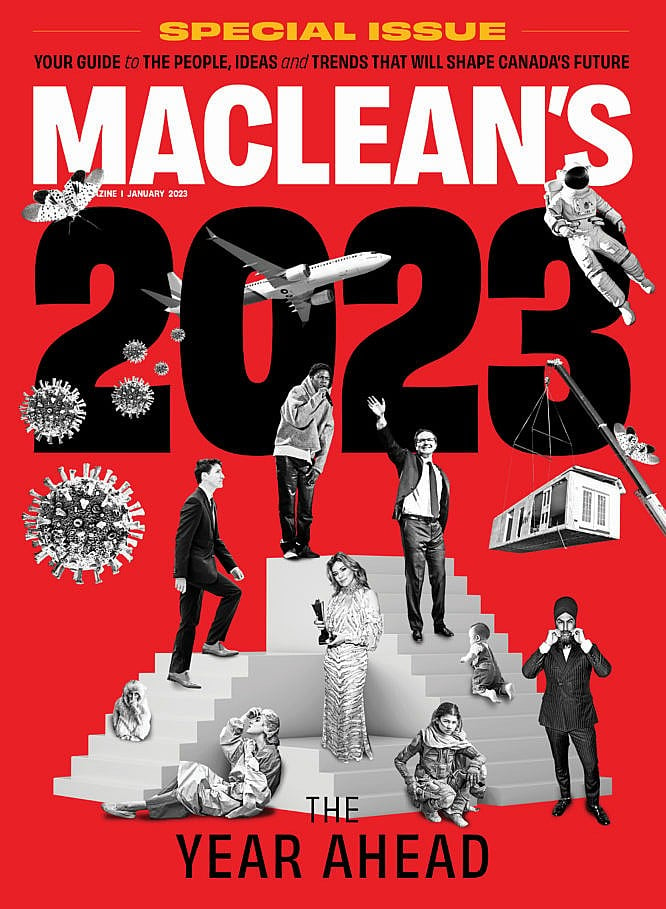My Prediction: We’ll do more of our banking and shopping on the blockchain
How the next iteration of the internet will change our lives

(Photo courtesy of the Canadian Web3 Council)
Share
Morva Rohani is the executive director, Canadian Web3 Council
When the internet was first created, we never could have predicted how ubiquitous it would become. We had no idea it would lead to email, Facebook and cat memes. Innovation of that scale doesn’t come around often—and our generation is about to live through another internet-level moment with the proliferation of Web3.
Web1 was the read-only internet of the 1990s, and Web2 arrived with the collaborative social web of the mid-2000s and 2010s. Web3 refers to the third iteration of the internet, which is founded on blockchain technologies and cryptocurrencies. When people hear “Web3,” they think of Bitcoin, but it’s so much more than that. Web3’s technology will eventually enable decentralized finance, grant users more control over their personal data and improve product tracking, among other things. It has the potential to be the most important innovation of our time.
The original utility of Web3 was to facilitate financial deals without the need for banks and other intermediaries. As a result, it’s largely the purview of developers, tech entrepreneurs and crypto investors. But everyone who uses money could benefit from this new technology. It’ll be possible to perform low-cost, near-instantaneous currency transfers around the world, which means individual users could manage their personal finances entirely on the blockchain. This would cut out transaction fees and wait times. Businesses and creators could use the blockchain to sell their products and content without having to sacrifice part of their earnings to distributors like Amazon or Spotify.
Soon, we’ll also start using Web3 technology to improve identification management. Instead of keeping endless member cards and passwords in our wallets and notes apps, we could simply encrypt our digital identities on the blockchain and use them in situations that require us to present our IDs—like renting a car, for example. Imagine no longer waiting months for a physical passport to come in the mail, or fretting that you forgot your driver’s licence at home.
The blockchain will make products more easily traceable, allowing consumers to track where their purchases come from. Shoppers will be able to find out when an apple was picked before buying it, or verify the provenance of a Chanel bag to ensure it’s the real deal. If, in the future, we end up spending a lot of time in virtual worlds—like the metaverse—we’ll use blockchain technology to shop and earn money.
There’s one problem: this technology is evolving so quickly that government bodies are struggling to keep up, resulting in a piecemeal regulatory approach with blurred boundaries between federal and provincial agencies. For example, we have inconsistent oversight of crypto platforms, and securities infrastructure varies across the country. We’re also saddled with unwarranted restrictions on innovation and client trading: Ontario has imposed investment limits on cryptocurrencies, whereas B.C., Alberta and Quebec have not. We’re stuck with a system that confuses regulators, investors and crypto users alike.
Canada was on track to become a world leader in Web3 just a few years ago. We invented the second-largest blockchain network (Ethereum), and some of the hottest NFT art markets emerged here. But we haven’t established policy fast enough, and innovators are now afraid of unknowingly violating laws they didn’t know existed. For instance, how does fraud prevention work in the Web3 space? What about taxes? Lacking a legal roadmap, many of our innovators have left for jurisdictions that have some guidelines, like California, Florida and Switzerland. Vitalik Buterin, who co-founded Ethereum while living in Toronto, has left Canada in favour of a nomadic lifestyle.
Our governments are not used to being ahead of the world in policy innovation. (Cannabis is a notable exception.) In my work with the Canadian Web3 Council, a group of private-sector stakeholders, I educate federal and provincial policymakers on how to move forward. This is the year to update our regulation of Web3 tech in Canada, to foster a framework of creators and better business right here. The Bank of Canada seems to be exploring the creation of its own version of a digital dollar, but it’s unclear what it will be used for. There is also a federal financial-sector legislative review on the digitalization of money under way, which the 2022 budget will fund for the next five years.
Even so, we may still be a few years from normalizing decentralized banking and digital identities. Innovators worldwide are going to make big technological leaps as the internet transforms. Canada has to decide whether or not it wants to be at the forefront.
— As told to Alex Cyr
This story is part of our annual “Year Ahead” package. Read the rest of our predictions for 2023 here.
This article appears in print in the December 2022 issue of Maclean’s magazine. Buy the issue for $9.99 or better yet, subscribe to the monthly print magazine for just $39.99.
